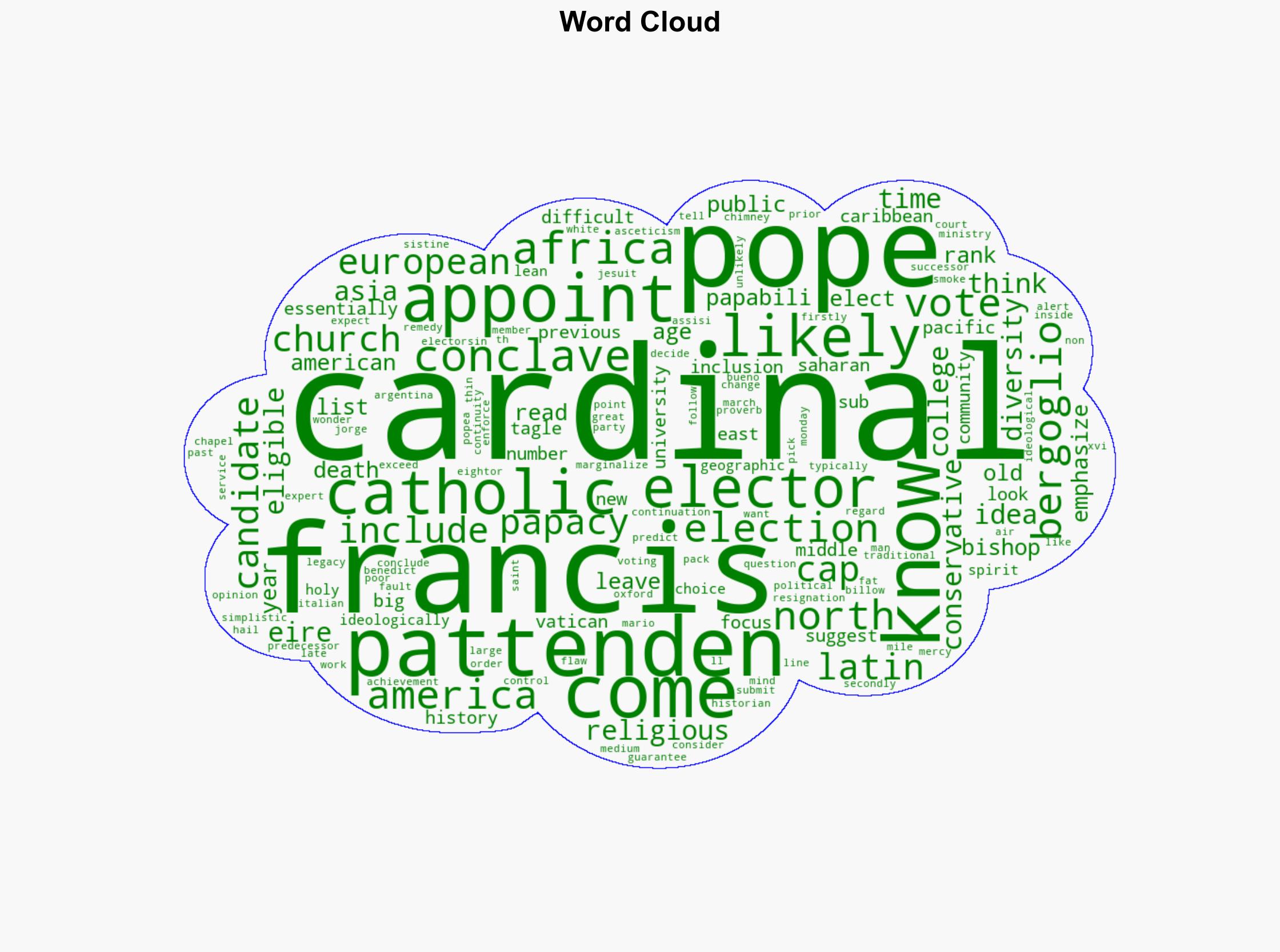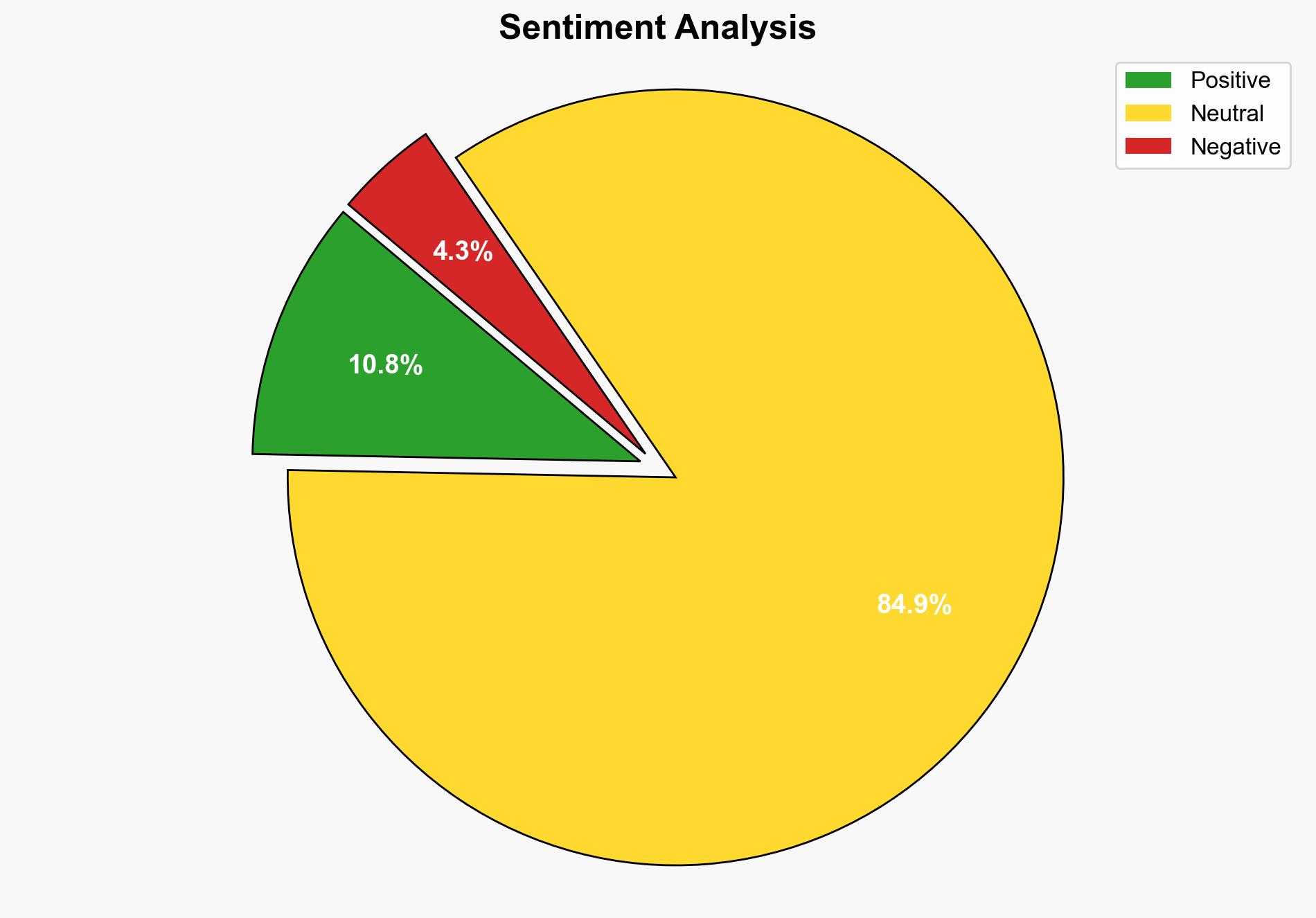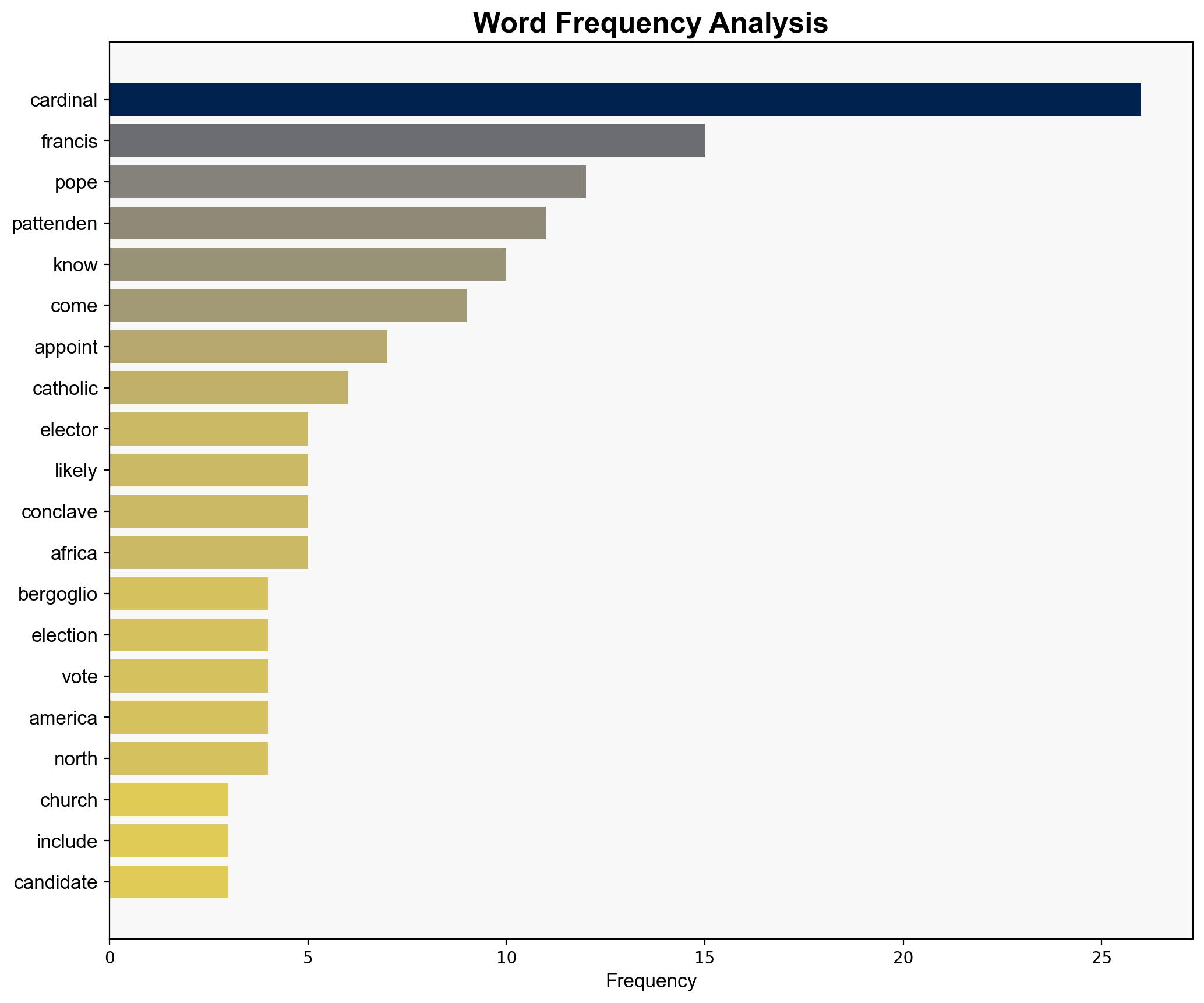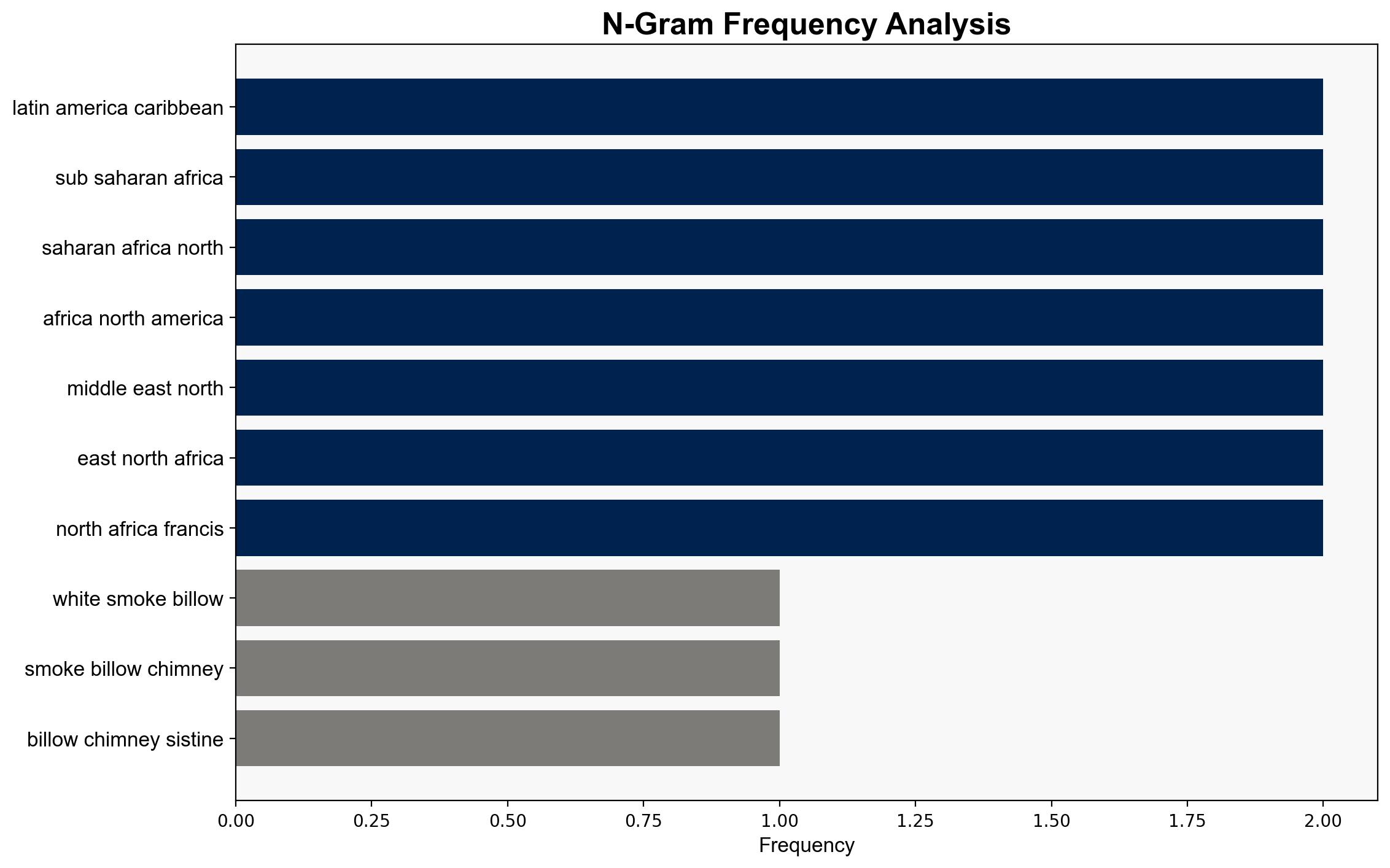Who Chooses the Next Popeand Who Chose Them – Time
Published on: 2025-04-23
Intelligence Report: Who Chooses the Next Pope and Who Chose Them – Time
1. BLUF (Bottom Line Up Front)
The selection of the next Pope is influenced by a diverse group of cardinal electors appointed by Pope Francis, emphasizing geographic and ideological diversity. This shift may impact the continuity of Francis’s policies and the future direction of the Catholic Church. Recommendations include monitoring the evolving dynamics within the College of Cardinals and assessing potential candidates’ influence on global Catholicism.
2. Detailed Analysis
The following structured analytic techniques have been applied to ensure methodological consistency:
SWOT Analysis
Strengths: Increased geographic diversity among cardinal electors enhances global representation.
Weaknesses: Potential ideological divides could lead to internal conflicts.
Opportunities: New leadership may address contemporary issues with fresh perspectives.
Threats: Resistance from traditional factions may hinder progressive reforms.
Cross-Impact Matrix
The appointment of diverse cardinals could lead to shifts in church policies, affecting global Catholic communities. This diversity may also influence the church’s stance on social issues, potentially creating feedback loops with political and social movements worldwide.
Scenario Generation
Scenario 1: A progressive Pope continues Francis’s legacy, focusing on inclusion and social justice.
Scenario 2: A conservative Pope reverses recent reforms, emphasizing traditional values.
Scenario 3: A moderate Pope seeks a balance, addressing both progressive and conservative concerns.
3. Implications and Strategic Risks
The election of a new Pope could alter the Catholic Church’s influence on global socio-political issues. A shift towards more progressive policies may align the church with contemporary social movements, while a conservative turn could lead to increased tension with secular governments and organizations.
4. Recommendations and Outlook
- Monitor the ideological leanings of key cardinal electors to anticipate potential policy shifts.
- Engage with Catholic communities to understand grassroots reactions to potential changes in church leadership.
- Scenario-based projections suggest a moderate approach is most likely, balancing continuity with change.
5. Key Individuals and Entities
Jorge Mario Bergoglio, Luis Antonio Tagle, Peter Turkson, Charles Maung Bo, Chibly Langlois, Anthony Poola, Robert McElroy, Carlos Eire.
6. Thematic Tags
(‘religious leadership, global influence, ideological diversity, Catholic Church dynamics’)




